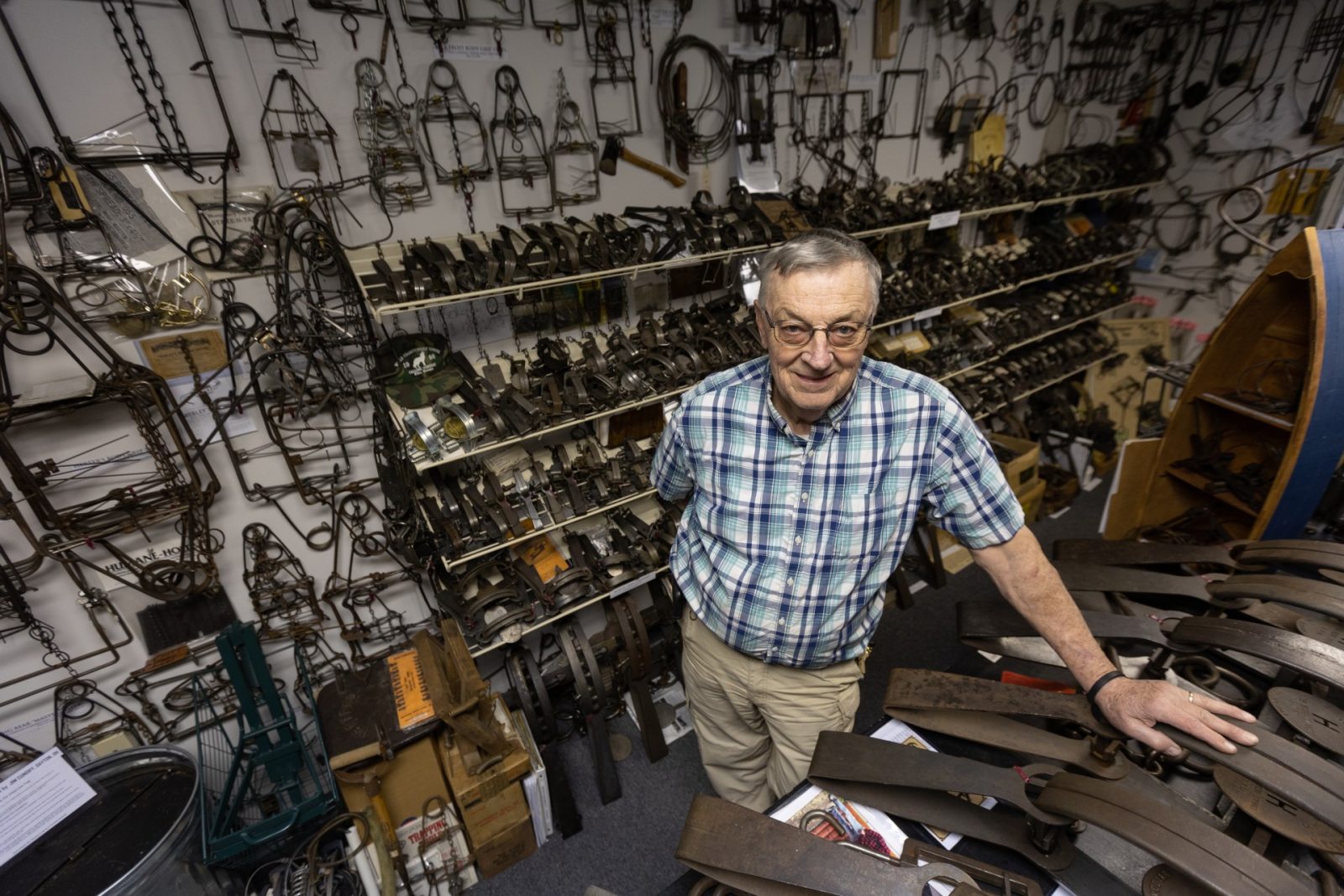Why Central Ohio’s Trap History Museum is one of the strangest and most interesting attractions in the area

It’s 32 feet long, 9 feet high, and weighs around 4,000 pounds. And while the Guinness Book of World Records hasn’t officially named it the World’s Largest Trap, it is undoubtedly the biggest one you will ever see. Tom Parr, owner and curator of the Trap History Museum in Galloway, has over 4,000 traps in his collection, but the towering steel structure sitting outside is what captures attention first. Don’t worry: It’s not functional, so snapping a selfie from the jaws is perfectly safe.
“A gentleman in the Upper Peninsula of Michigan made it, and then brought it to the fairgrounds during our yearly National Trappers Association meeting in 2008,” shared Parr. “It was on display at the entrance, but no one realized it was for sale. He put a price tag on it on the last day, and when my friend let me know about it, I ended up buying it.”
It arrived at his museum on a flatbed truck and has been the signature attraction ever since.
But there’s far more to see once you venture inside Parr’s museum, including over 4,000 animal traps, memorabilia, trapping tools, baits, and an entire library, along with a man who has spent most of his life studying the history of the fur trade and loves sharing his knowledge with others.
BROUGHT TO YOU BY
Growing up in Mansfield and Columbus, “I always liked mountain men and the outdoors as a child,” said Parr. “I trapped a lot and still do some. I got interested in collecting animal traps in 1987, and learning the history of the early fur trade.”
What began as a hobby kept growing, as Parr visited various trade shows and trap collector meetings.
Originally, most of his expansive collection lived in various rooms of his home, but his wife “wasn’t too thrilled with having all that stuff in the house,” Parr said. “So eventually we moved it to a lower level of a building on the property.”
In 1991, the now-retired Upper Arlington firefighter became president of the North American Trap Collectors Association.
In 2001, the organization decided to set up a North American Trap Collectors Museum in order to create a nonprofit where people could donate items. This collection is now housed within Parr’s privately-owned museum.
“We have traps from all over the world, as well as many collectible books and documents,” he said.
The Trap History Museum and Parr’s expertise hasn’t gone unnoticed. The History Channel’s Modern Marvels visited in 2006 and featured the museum’s collection on the hit show. Parr also writes for various publications; his articles about antique traps are featured in Columbus-based magazine “Fish-Fur-Game.”
While the museum is free and open to the public, it doesn’t have standard operating hours, and the spaces aren’t ideal for large groups or unannounced visitors. Those interested in visiting should check out the website, traphistorymuseum.com, and then give Parr a call to set up a time to visit.
“It’s an interesting hobby, although not what you would call a politically correct one,” Parr said with a laugh. “But there’s a lot of history behind it. People used to use traps for their livelihood, and the history of the fur trade is very interesting.”
Want to read more? Check out our print publication, (614) Magazine. Learn where you can find a free copy of our new March issue here!
BROUGHT TO YOU BY




